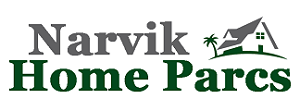The Art of Transforming Distribution Facilities: Expert Tips from a Painting Contractor

Key Takeaways:
- When transforming a distribution facility, select a color palette that aligns with your company’s branding, enhances visibility, creates the desired atmosphere, and suits the lighting conditions.
- Employ practical painting techniques such as zoning, line markings, anti-slip coatings, and using durable paints for high-traffic areas to enhance functionality and safety.
- Ensure safety and compliance by using fire-resistant and chemical-resistant paints, incorporating reflective paints, and adhering to OSHA regulations.
- A well-painted facility can boost employee morale by choosing colors that promote a positive atmosphere, incorporating branding and culture, creating a sense of well-being, and inspiring creativity.
Tips for transforming distribution facilities
Transforming distribution facilities requires careful planning and execution to ensure a successful outcome. As a distribution facility painting contractor with years of experience in the industry, I have seen firsthand the difference a well-painted facility can make. In this guide, I will share expert tips and insights on how to transform distribution facilities into functional, safe, and visually appealing spaces. Whether you are renovating an existing facility or starting from scratch, these tips will help you achieve your goals.
1. The power of color: selecting the right palette
One of the most important aspects of transforming a distribution facility is selecting the right color palette. The color scheme you choose can have a significant impact on the overall atmosphere and functionality of the space.
When selecting colors for your facility, consider the following:
- Branding: Incorporate your company’s branding colors to create a cohesive look throughout your facility.
- Visibility: Choose colors that enhance visibility and make it easier for employees to navigate the facility. Bright and contrasting colors can be used to highlight safety equipment, signage, and aisles.
- Mood and Atmosphere: Different colors evoke different emotions. For example, blue is often associated with calmness and productivity, while yellow is associated with energy and positivity. Consider the desired mood and atmosphere in each area of your facility and select colors accordingly.
- Lighting: Take into account the lighting conditions in your facility. Natural light and artificial lighting can affect how colors appear. Test paint samples in different lighting conditions before making a final decision.
By carefully selecting the right color palette, you can create a visually appealing and functional space that aligns with your brand image and enhances employee productivity.
2. Enhancing functionality: practical painting techniques for distribution facilities
Transforming a distribution facility goes beyond aesthetics. It’s essential to employ practical painting techniques that enhance functionality and address specific needs unique to these spaces.
Consider the following techniques for enhancing functionality:
- Zoning: Use paint to create clearly defined zones within your facility. Different colors can be used to distinguish areas dedicated to different functions, such as receiving, storage, and order fulfillment. This helps improve workflow and minimizes confusion.
- Line Markings: Use durable paints to create clear and visible line markings on the floor for guiding the movement of equipment, such as forklifts. These markings can help prevent accidents and optimize the flow of goods.
- Anti-Slip Coatings: Apply anti-slip coatings to areas prone to moisture or spills to reduce the risk of slips and falls. These coatings provide added safety for employees working in distribution facilities.
- High-Traffic Areas: Use paints with high durability and resistance to abrasion for areas with heavy foot or vehicle traffic. This ensures that the painted surfaces can withstand the wear and tear associated with daily operations.
By implementing these practical painting techniques, you can improve the functionality of your distribution facility, ultimately leading to increased efficiency and safety.
3. Creating a safe environment: painting for safety and compliance
Creating a safe environment should be a top priority when transforming a distribution facility. Paint can play a crucial role in enhancing safety and ensuring compliance with industry regulations.
Consider the following safety and compliance measures when painting your facility:
- Fire Resistance: Use fire-resistant paints and coatings to protect structural elements, electrical equipment, and other vulnerable areas from fire hazards. This helps minimize the potential for fire-related accidents and damage.
- Chemical Resistance: If your facility deals with hazardous substances or chemicals, use specialized paints that are resistant to corrosion and chemical spills. This protects both the facility and employees from potential harm.
- Reflective Paint: Enhance visibility and safety by incorporating reflective paints on walls, columns, and barriers. These paints increase visibility in low light conditions, reducing the risk of collisions and accidents.
- OSHA Compliance: Familiarize yourself with the Occupational Safety and Health Administration (OSHA) regulations related to painting in distribution facilities. Ensure that your painting contractor adheres to these standards to maintain a safe and compliant working environment.
By prioritizing safety and compliance in your painting approach, you create a secure environment for your employees and minimize the risk of accidents or regulatory issues.
4. Beyond aesthetics: the impact of a well-painted facility on employee morale
While the primary goal of transforming a distribution facility is often related to functionality and safety, the aesthetic appeal should not be overlooked. A well-painted facility can have a significant impact on employee morale and satisfaction.
Consider the following aspects when using paint to enhance employee morale:
- Color Psychology: As mentioned earlier, colors can evoke different emotions. Choose colors that promote a positive and energizing atmosphere, which can boost employee morale and motivation.
- Branding and Culture: Incorporate your company’s branding and culture into the facility’s design through paint. This creates a sense of pride and belonging among employees, fostering a positive work environment.
- Well-Being and Comfort: Use paint colors that create a sense of calmness and promote well-being. This can be especially beneficial in break rooms or relaxation areas, where employees can recharge during their breaks.
- Creativity and Inspiration: Consider using accent walls or murals to inspire creativity and provide visual interest. These elements can create a stimulating environment that encourages employees to think outside the box.
A well-painted facility not only enhances employee morale but also leaves a lasting impression on visitors and clients. It reflects your organization’s commitment to excellence and attention to detail.
In conclusion, transforming a distribution facility requires more than just a fresh coat of paint. By selecting the right color palette, employing practical painting techniques, prioritizing safety and compliance, and considering the impact on employee morale, you can create a fully optimized and visually appealing facility. As a painting contractor, I have witnessed the transformative power of paint and its ability to enhance functionality, safety, and overall productivity. Take these expert tips into consideration, and you will be on your way to achieving a truly remarkable distribution facility.

